Price:₹13,000.00
Har Ki Dun – Ruinsara trek is renowned for its stunning beauty and rich cultural experience in the Garhwal Himalayas. Uttarakhand
Har ki dun-Ruinsara tal Trek lies among the best Treks in Uttarakhand. The vast meadows or lake, valley, stretch from 3645 meters to 3500 Meters. Har ki dun-Ruinsara Tal treks comes under Govind Wildlife Sanctuary National Park.
Har Ki Dun is located in the Garhwal Himalayas of Uttarakhand, within the Govind Pashu Vihar National Park. It lies at an altitude of 3,566 meters (11,700 feet) and is one of the most scenic valleys in the Himalayas.
The trek offers stunning views of Swargarohini, Bandarpunch, and Black Peak (Kalanag), some of the tallest and most significant peaks in the region. The valley itself is cradled between towering mountains, with lush green meadows, alpine forests, and sparkling rivers flowing through it.
Ruinsara Tal is a high-altitude glacial lake situated at 3,600 meters (11,800 feet) in the Garhwal Himalayas of Uttarakhand. It lies within the Govind Pashu Vihar National Park and Sanctuary, which is known for its rich biodiversity.
Surrounded by snow-capped peaks like Swargarohini, Kalanag (Black Peak), and Bandarpoonch, Ruinsara Tal is a remote and pristine location that offers breathtaking views of the Himalayan landscape.
Mythological Significance: Mahabharata Connection: Similar to Har Ki Dun, Ruinsara Tal is linked to the epic Mahabharata. It is believed that the Pandavas visited this lake during their exile and used it as a resting place on their journey to Swargarohini, the mythical peak considered the gateway to heaven.
The serene and secluded nature of Ruinsara Tal made it a perfect location for the Pandavas to pause and prepare for their final ascent to the heavenly realm. This mythological association adds a deep spiritual value to the lake, making it a place of pilgrimage for some.
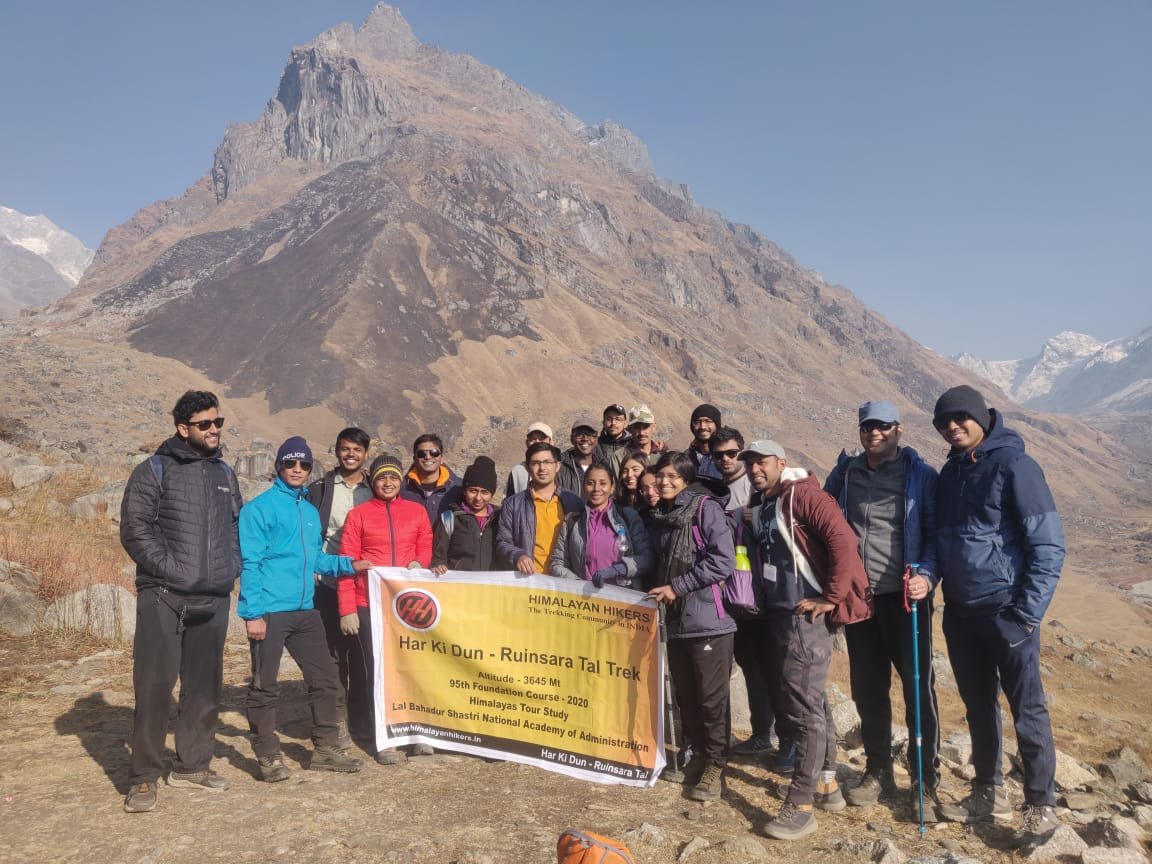
Har ki dun ruinsara tal trek Cultural and Local Beliefs:
Ruinsara Devi: The lake is believed to be watched over by a local deity, Ruinsara Devi, who is revered by the villagers in the surrounding areas. According to local legends, the goddess protects the valley and ensures that those who respect nature and the land are kept safe.
Villagers and shepherds from the region often perform rituals and offerings to the goddess when they visit Ruinsara Tal, especially during seasonal migrations with their livestock. This belief in the protective powers of the goddess reflects the close connection between nature and spirituality in the Garhwal region.
Traditions of the Villagers: The nearby villages of Osla and Seema hold deep respect for Ruinsara Tal, considering it a sacred site. Historically, villagers have made occasional pilgrimages to the lake to offer prayers and seek blessings for their well-being.
The local Garhwali people have long maintained a tradition of harmony with nature, viewing lakes, rivers, and forests as the abode of deities. This reverence for nature is central to their way of life, and Ruinsara Tal is considered one of the most spiritually significant locations in their cultural landscape.
Historical Isolation:
Due to its remote location, Ruinsara Tal and its surrounding areas remained relatively untouched by the outside world for centuries. The local communities relied on traditional agricultural practices and herding, maintaining a simple and sustainable way of life.
The isolation of the region helped preserve the ancient Garhwali customs and spiritual practices, many of which are still evident in the villages today. Ruinsara Tal, as part of this secluded region, became a place for meditation and retreat, not just for local villagers but also for wandering sages in the past.
Natural and Ecological Importance:
Biodiversity: Ruinsara Tal lies within the Govind Pashu Vihar National Park, a sanctuary known for its diverse flora and fauna. The area is home to a variety of wildlife, including the Himalayan black bear, snow leopard, and serow, as well as numerous species of birds such as Himalayan monal and pheasants.
The lake is surrounded by alpine meadows that bloom with wildflowers during the summer months, creating a stunning contrast against the backdrop of the snow-covered peaks. The forested areas around the lake are rich with pine, deodar, and rhododendron trees.
Rivers and Glaciers: The lake is fed by glacial meltwaters, which flow down from the surrounding peaks. The region’s glaciers, including the Bandarpunch Glacier and Jaundhar Glacier, play a crucial role in sustaining the water supply to the lake and the Supin River.
The water from Ruinsara Tal eventually joins the Yamuna River, one of the holiest rivers in India, adding to its spiritual and environmental significance.
Folklore and Stories:
Legend of Ruinsara Tal’s Origin: Local legends tell various stories about the origin of Ruinsara Tal, some of which involve divine intervention. According to one story, the lake was created by a celestial being who wanted a secluded place to meditate. The lake’s name is thought to derive from the local dialect, though its exact meaning remains obscure.
Some say that the lake’s crystal-clear waters reflect the purity of the deities who once visited the region, and the locals believe that drinking from the lake brings blessings and prosperity.
Spiritual Retreat for Sages: Historically, Ruinsara Tal was considered an ideal location for sadhus (holy men) and sages seeking solitude for meditation and spiritual growth. The isolation of the lake and the surrounding mountains made it an attractive retreat for those looking to connect with nature and the divine.
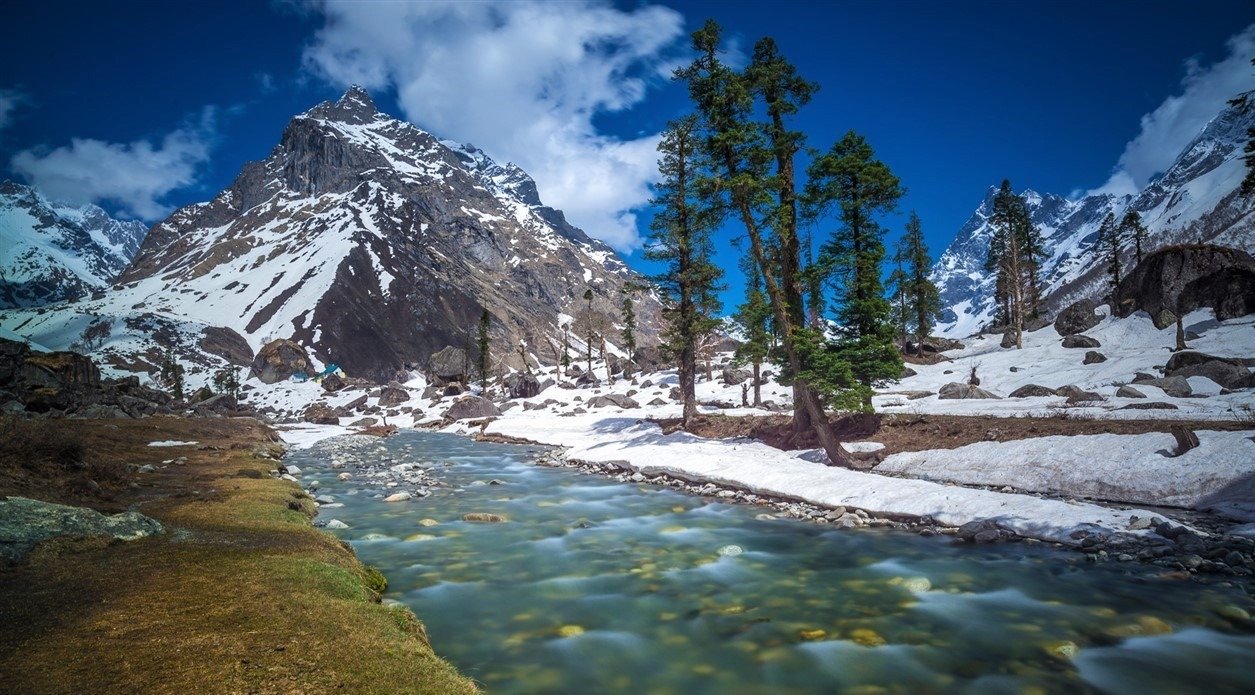
Why You Should Do Har ki dun and Ruinsara Tal Trek Together ?
Har Ki Dun: Known as the “Valley of Gods,” Har Ki Dun offers expansive meadows, dense forests of pine and deodar, and beautiful views of snow-capped peaks like Swargarohini and Bandarpunch. The valley is a paradise for nature lovers and photographers.
Ruinsara Tal: Ruinsara Tal takes you to a more remote and tranquil part of the region. The crystal-clear lake is set against the backdrop of towering peaks, including Kalanag (Black Peak). The lake’s alpine meadows are dotted with wildflowers, making it a striking contrast to the forested valleys of Har Ki Dun.
By doing both treks, you experience the full spectrum of Himalayan beauty—from river valleys and forests to pristine lakes and towering glaciers.
Cultural Immersion in Ancient Villages
Har Ki Dun: The trek passes through ancient Garhwali villages like Osla and Seema, where the people still follow traditional ways of life. The unique temple dedicated to Duryodhana in Osla, a rare find in India, gives insight into the village’s distinct cultural heritage.
Ruinsara Tal: Though more remote, the route to Ruinsara also passes through similar Garhwali villages, providing more opportunities to interact with the local communities. You can experience their hospitality, traditional wooden houses, and ancient customs.
Combining the two treks allows you to fully engage with the culture and history of the region, seeing how the villagers live in harmony with nature and mythology.
Extended Wilderness and Solitude
Har Ki Dun: While Har Ki Dun is a popular trekking destination, it retains its charm and wilderness feel due to its isolation. The valley is part of the Govind Pashu Vihar National Park, offering the chance to spot wildlife like Himalayan black bears, serows, and various bird species.
Ruinsara Tal: The route to Ruinsara Tal is far more secluded. Since fewer trekkers visit this lake, it offers more tranquility and solitude. The peaceful environment around Ruinsara makes it an ideal spot for those seeking a deeper connection with nature.
Doing both treks provides the perfect balance—enjoying the slightly more accessible beauty of Har Ki Dun while escaping into the serenity of Ruinsara Tal.
Adventure and Challenge
Har Ki Dun: The trek is considered moderate, with gradual ascents and well-marked trails. It’s an excellent trek for beginners and those looking to experience the beauty of the Himalayas without extreme difficulty.
Ruinsara Tal: Adding Ruinsara Tal to your trek introduces more of a challenge. The route to the lake is more remote and involves steeper climbs, offering a greater sense of adventure. For trekkers who want to push themselves and explore the road less traveled, Ruinsara Tal is the perfect addition.
Combining both treks allows you to increase the level of adventure without requiring technical mountaineering skills.
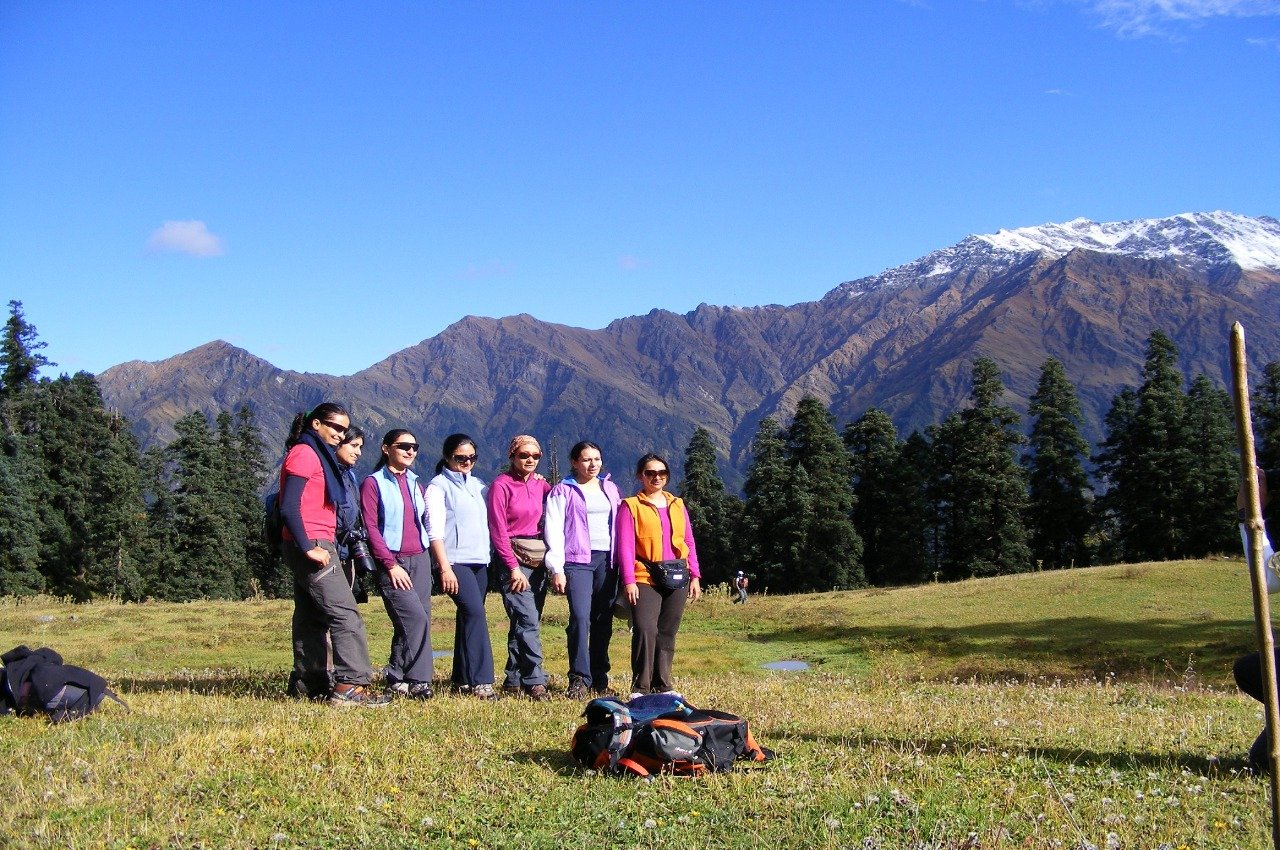
Extended Duration for a Complete Experience
Har Ki Dun Trek Alone: Typically takes about 6-7 days, allowing trekkers to enjoy the beauty of the Har Ki Dun valley and nearby villages.
Har Ki Dun with Ruinsara Tal: Adding Ruinsara Tal extends the trek by 2-3 days, giving you a richer experience and more time in the mountains. You’ll also cover more diverse terrain, from the forests and meadows of Har Ki Dun to the alpine beauty of Ruinsara.
By extending the trek, you get a more fulfilling adventure without significantly increasing the difficulty level.
Rich Biodiversity
Har Ki Dun: As part of the Govind Pashu Vihar National Park, Har Ki Dun is home to a variety of wildlife and plant species. You’ll trek through dense forests where you might spot animals like the Himalayan monal (the state bird of Uttarakhand), as well as various species of pheasants, deer, and other mountain wildlife.
Ruinsara Tal: The meadows and forests around Ruinsara Tal are equally rich in flora and fauna. The lake is surrounded by alpine meadows that bloom with wildflowers in the summer, creating a magical landscape for nature lovers.
Combining both treks allows you to fully appreciate the biodiversity of the region, from lower-altitude forests to high-altitude alpine ecosystems.
A Perfect Blend of Nature, Culture, and Adventure
Doing the Har Ki Dun and Ruinsara Tal treks together offers an unparalleled experience in the Garhwal Himalayas. You get to immerse yourself in the region’s rich mythology, explore its diverse landscapes, interact with its ancient cultures, and enjoy extended solitude in nature. Whether you’re a beginner trekker looking for a scenic and culturally rich adventure or an experienced trekker seeking more solitude and challenge, combining these two treks gives you the best of both worlds.
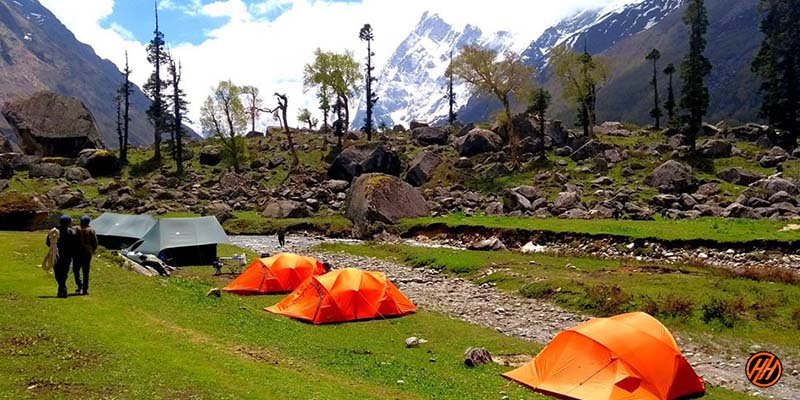
Why it is special to go Ruinsara Tal after Har Ki Dun?
Extended Adventure and Exploration
Har Ki Dun offers incredible views, cultural insights, and an overall moderate trekking experience through lush valleys and ancient villages. However, continuing towards Ruinsara Tal introduces you to a more isolated and tranquil part of the Garhwal Himalayas, taking the adventure further.
While Har Ki Dun showcases wide valleys and forests, Ruinsara Tal brings you into a pristine alpine environment, with stunning views of the towering Swargarohini, Kalanag (Black Peak), and Bandarpunch ranges.
Enhanced Mythological Journey
Har Ki Dun is deeply linked to the Pandavas’ journey to heaven, and the valley is often called the Valley of the Gods. Visiting Ruinsara Tal afterwards feels like completing this mythological pilgrimage, as it is believed that the Pandavas camped at Ruinsara Tal before continuing towards Swargarohini.
Ruinsara Tal is considered sacred, making it a spiritual experience for trekkers who want to connect with the rich history of the Mahabharata in a deeper way.
Secluded Beauty and Solitude
Har Ki Dun is relatively more accessible and popular among trekkers. As you move towards Ruinsara Tal, the trail becomes more remote, with fewer trekkers, allowing you to experience the Himalayan wilderness in solitude.
The pristine, mirror-like Ruinsara Tal is surrounded by alpine meadows and towering peaks, offering a peaceful, meditative environment after the bustling trails of Har Ki Dun.
Gateway to Further High-Altitude Passes
Ruinsara Tal serves as a base or connecting route for some of the most thrilling and challenging high-altitude passes in the Garhwal Himalayas, such as the Bali Pass, Dhumdhar Kandi Pass, and Black Peak (Kalanag Base Camp). Here’s how Ruinsara Tal connects these incredible destinations:
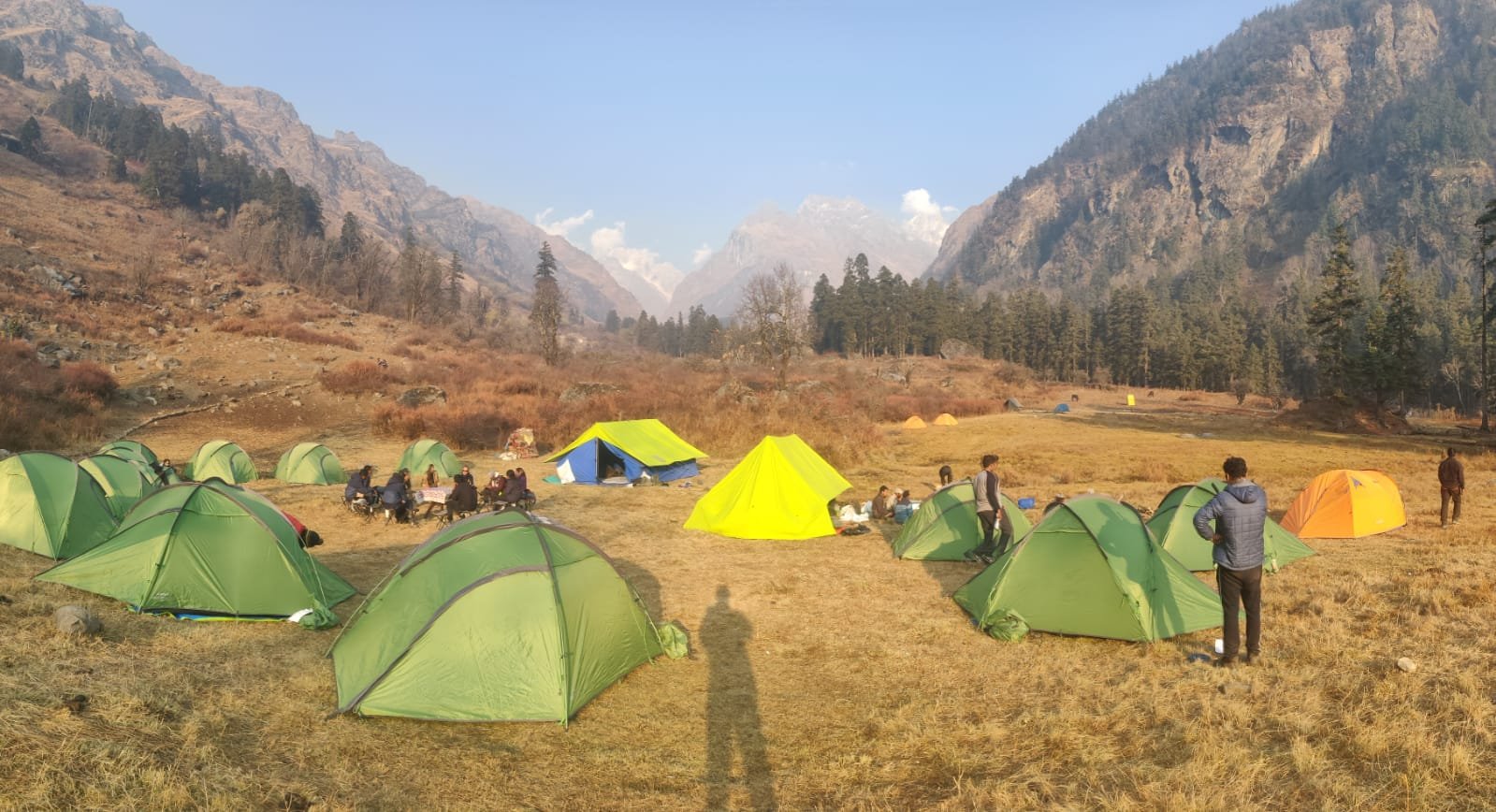
Key Routes Connected to Ruinsara Tal
Bali Pass (4,950 meters)
Starting Point: You can approach Bali Pass from Ruinsara Tal, making it a great addition to the trek.
Route: From Ruinsara Tal, the trail leads up through alpine meadows and moraines, climbing towards the Bali Pass. It is a challenging trek with steep ascents, requiring physical endurance and some basic mountaineering skills.
Why Special?: The Bali Pass route offers a panoramic view of peaks like Swargarohini, Bandarpunch, and Kalanag. Upon crossing the pass, you descend towards Yamunotri, adding a pilgrimage element to the trek. Bali Pass is known for its raw and rugged terrain, offering trekkers an unforgettable high-altitude adventure.
Kalanag (Black Peak) Base Camp (6,387 meters)
Route: After visiting Ruinsara Tal, trekkers can continue toward Kalanag Base Camp. The trail runs along the Ruinsara Gad river and gradually ascends toward the Jaundhar Glacier, which is close to the base camp of Kalanag (Black Peak).
Why Special?: Kalanag is a popular peak for mountaineers, and its proximity to Ruinsara Tal makes it an ideal route for trekkers interested in mountaineering expeditions. The area offers stunning close-up views of snow-capped peaks, glaciers, and rugged terrain.
Dhumdhar Kandi Pass (5,490 meters)
Historical Importance: The Dhumdhar Kandi Pass was historically used by traders and pilgrims traveling between the Gangotri and Yamunotri regions. It connects the Bhagirathi Valley to the Yamuna Valley, making it a historically significant route.
Route: From Ruinsara Tal, the trail ascends towards Bandarpunch Glacier and crosses the high-altitude Dhumdhar Kandi Pass, eventually descending towards Gangotri.
Why Special?: Dhumdhar Kandi Pass is one of the more difficult treks in the region, often requiring technical climbing skills due to its high altitude and challenging terrain. The pass offers panoramic views of Bandarpunch, Swargarohini, and Kalanag peaks. It is also a lesser-known, less-traveled route, adding to its allure for seasoned trekkers seeking a more isolated experience.
Unique Flora and Fauna
The Har Ki Dun valley is known for its biodiversity, but the region around Ruinsara Tal offers even more variety in terms of plant and animal life. As you ascend towards the tal, you encounter rhododendron forests, alpine meadows blooming with wildflowers, and possibly even sightings of rare wildlife like Himalayan black bears, musk deer, and snow leopards.
The remoteness of Ruinsara Tal adds to its sense of being a hidden treasure, making it special for trekkers who enjoy spotting Himalayan flora and fauna in a tranquil setting.
Connection Between Treks:
Combining Har Ki Dun with Ruinsara Tal is often seen as a natural progression because:
- Har Ki Dun offers an introduction to the region’s cultural and mythological significance with moderate trekking.
- Ruinsara Tal elevates the experience by adding more physical challenge, scenic isolation, and opportunities to explore more difficult passes and peaks.
Both routes complement each other, providing a well-rounded Himalayan adventure.
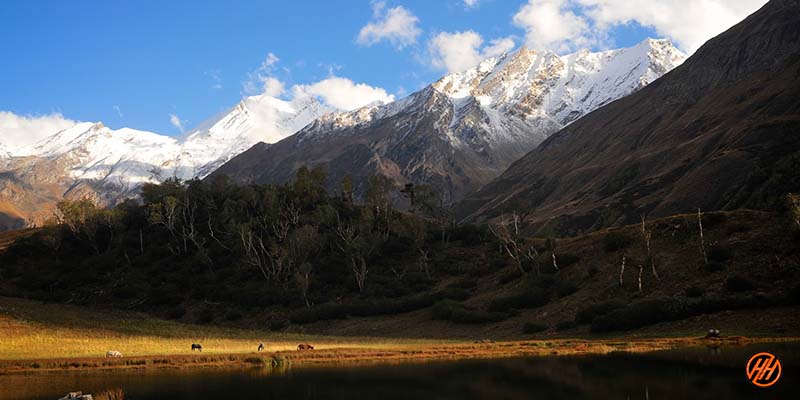
Short Itinerary for the Har Ki Dun Ruinsara Tal Trek
Day 1: Drive from Dehradun to Sankri via mussoorie Kamptifall
- Travel: Drive from Dehradun to Sankri (about 190 km, 7-9 hours).
- Activities: Enjoy scenic views during the journey.
- Overnight: Stay in the Grand shiva Hotel at Sankri.
Day 2: after breakfast drive from Sankri to dharkot 1/2 hours by taxi saem day trek to Cheludgad/ Seema
- Trek: 08 km trek to cheludgad /Seema (or Osla).
- Altitude: 2,560 meters (8,400 feet).
- Activities: Trek through beautiful forests and traditional villages.
- Overnight: Stay in guesthouses or camps.
Day 3: Trek from cheludgad/ Seema to Har Ki Dun/
- Trek: 12 km trek to Har Ki Dun.
- Altitude: 3,566 meters (11,700 feet).
- Activities: Enjoy the stunning views of the valley and surrounding peaks.
- Overnight: Camp at Har Ki Dun.
Day 4: Explore Har Ki Dun valley
- Activities: Day hike to explore the area, possibly visiting nearby locations like JManida Tal or Jaundhar Glacier or Haru Ka Danda.
- Overnight: Camp at Har Ki Dun.
Day 5: Trek from Har Ki Dun to Ruinbasera Camp
- Trek: 7 km trek to Rainbasera Camp
- Altitude: 3,200 meters
- Activities: Trek through alpine meadows forest near by ruinsara tal river
- Overnight: Camp at Rainbasera Camp
Day 6: Explore Ruinsara tal base camp of bali pass, blackpeak, dhumdhar kandi valley
- Trek: trek of 16 km back to Rainbasera Camp
- Activities: Retrace your steps while soaking in the landscape.
- Overnight: Stay in Rainbaseara camps.
Day 7: Rainbaseara Camp to Gangad Village Road head 10 km Same day drive to Sankri
- Trek: 14 km back to Sankri. overnight stay the grand shiva hotel
- Activities: Enjoy the devsu bugyal stunning views of the valley and surrounding peaks. village trails
- Overnight: Hotel at Sankri
Day 8: Return from Sankri to Dehradun
- Travel: Drive back to Dehradun (about 190 km, 7-9 hours).
- Activities: Arrive in Dehradun evening 6 to 7 pm

Is it right for first time trekkers to do the Har Ki Ruinsara Tal trek together?
Har Ki Dun: Beginner-Friendly Trek
Difficulty Level: The Har Ki Dun trek is considered a moderate trek, making it a good choice for first-time trekkers. The trails are well-marked, and the altitude gain is gradual, allowing trekkers to acclimatize as they ascend.
Distance: Har Ki Dun alone covers around 44 km (round trip), which is manageable over the typical 6-7 day trek duration.
Terrain: The route passes through picturesque meadows, forests, and rivers, offering plenty of scenic breaks. The ascents are steady, and the trails are not technically difficult.
Overall, Har Ki Dun is a great trek for beginners due to its manageable difficulty, stunning landscapes, and opportunities to explore local culture in the ancient villages of Osla and Seema.
Ruinsara Tal: A Bit More Challenging
Difficulty Level: Adding Ruinsara Tal to the Har Ki Dun trek does raise the overall difficulty level. The route to Ruinsara Tal is more remote, with steeper ascents and a less well-trodden path. This makes the trail more challenging than the relatively moderate Har Ki Dun trek.
Distance: The combined trek length increases to around 64-70 km, adding a few extra days (typically 2-3 days) to your trek. The additional distance and time require better physical stamina and endurance.
Altitude: Ruinsara Tal sits at an altitude of 3,600 meters (11,800 feet), which is higher than Har Ki Dun’s altitude of 3,566 meters (11,700 feet). While the increase is not extreme, it requires better acclimatization and trekking preparation.
For first-time trekkers, the remote nature of Ruinsara Tal might feel more demanding, especially because of the added altitude and the longer trail. It requires more endurance and preparation than Har Ki Dun alone.
Fitness and Preparation
Physical Fitness: While the Har Ki Dun portion can be manageable for beginners, adding Ruinsara Tal requires a higher level of physical fitness. Beginners who are confident in their stamina and ability to walk for longer hours (7-8 hours per day) over varied terrain may find the combined trek rewarding.
Training: It’s advisable for first-time trekkers to train a few weeks before attempting this combined trek. Regular cardiovascular exercises (like running, cycling, or hiking), strength training, and endurance workouts can help prepare for the added challenge of Ruinsara Tal.
Acclimatization and Altitude Considerations
- Since both Har Ki Dun and Ruinsara Tal are at relatively high altitudes (above 3,500 meters), proper acclimatization is crucial. First-time trekkers should be cautious about altitude sickness, even though the altitudes are not extreme compared to other Himalayan treks.
- The gradual ascent in Har Ki Dun provides enough time to acclimatize, and with a proper itinerary that includes rest days, most trekkers should adjust well. However, beginners should be mindful of the additional height gained while trekking to Ruinsara Tal.
Support and Guidance
For first-time trekkers, it is highly recommended to trek with a certified guide or trekking agency. Having support from experienced guides ensures that:
- You follow the right acclimatization schedule.
- You have help navigating through more challenging sections, especially on the way to Ruinsara Tal.
- You’re prepared with all the necessary gear and safety equipment.
If you choose a reputable trekking operator like Himalayan Hikers, they can offer the necessary support to make the combined trek safer and more enjoyable for beginners.
Logistics and Time Commitment
- Duration: The Har Ki Dun trek alone typically takes around 6-7 days. Adding Ruinsara Tal extends the trek by another 2- days, making it a 08-09 day trek.
- Longer Trek Duration: For beginners, it’s important to assess whether they’re ready for a trek lasting more than a week. While the additional time in nature is rewarding, it can also be tiring for someone who is new to multi-day treks.
7. Natural Beauty and Reward
- The combined Har Ki Dun-Ruinsara Tal trek offers a more diverse range of landscapes. Har Ki Dun provides beautiful valleys, rivers, and forests, while Ruinsara Tal takes you deeper into the alpine zone with more solitude and stunning views of snow-capped peaks.
- The sense of accomplishment upon completing both Har Ki Dun and Ruinsara Tal can be highly rewarding for beginners, as you experience a variety of Himalayan terrains and ecosystems.
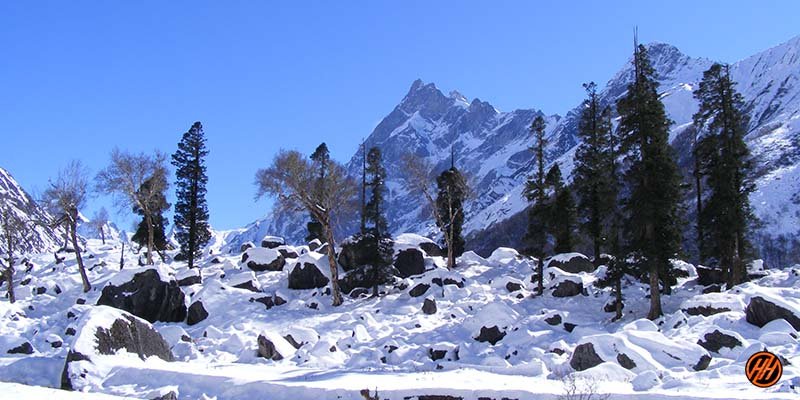
Altitude we are going to cover in Ruinsara tal Har ki dun Trek
In the Har Ki Dun – Ruinsara Tal Trek, you will cover a range of altitudes as you trek through the Garhwal Himalayas. Here’s a breakdown of the key altitudes you’ll encounter:
Starting Point (Sankri Village)
- Altitude: ~1,920 meters (6,300 feet)
- Overview: The trek begins at Sankri, a small village that serves as the base camp for several treks in the region, including Har Ki Dun, Ruinsara Tal, and Bali Pass.
Taluka Village
- Altitude: ~2,100 meters (6,890 feet)
- Overview: From Sankri, you drive to Taluka, which is the starting point of the actual trek. It is a small hamlet surrounded by beautiful landscapes of forests and streams.
Seema/Osla Village
- Altitude: ~2,560 meters (8,400 feet)
- Overview: On the first day of trekking, you reach either Seema or Osla Village. These ancient villages are known for their cultural significance and traditional wooden houses. It’s a gradual ascent through forests and streams.
Har Ki Dun Valley
- Altitude: ~3,566 meters (11,700 feet)
- Overview: The trek to Har Ki Dun takes you through dense forests and alpine meadows. The valley is surrounded by towering peaks such as Swargarohini and Bandarpunch, and offers breathtaking views of the snow-capped mountains. This is the highest point of the Har Ki Dun section of the trek.
Ruinsara Tal
- Altitude: ~3,600 meters (11,811 feet)
- Overview: After exploring Har Ki Dun, the trail continues to Ruinsara Tal, a pristine alpine lake. The trek to Ruinsara involves ascending through rugged terrain, alpine meadows, and moraines, and offers a more secluded experience than Har Ki Dun. The lake is surrounded by towering peaks like Kalanag (Black Peak) and Swargarohini.
Total Altitude Range Covered
- Starting Altitude: ~1,920 meters (6,300 feet) at Sankri
- Highest Altitude: ~3,600 meters (11,811 feet) at Ruinsara Tal
- Total Altitude Gain: ~1,680 meters (5,511 feet) over the course of the trek
Acclimatization
- Since the highest point is around 3,600 meters, the altitude is not extreme, but it’s still important to be mindful of altitude sickness. Both Har Ki Dun and Ruinsara Tal allow for a gradual ascent, which gives your body time to acclimatize.
- The slow and steady pace of the trek, combined with proper hydration and rest days, helps reduce the risk of acute mountain sickness (AMS).
Key Points Harkidoon Ruinsara Tal Trek
Duration: – 07 Nights 08 Days from Dehradun to Dehradun
Base camp: – Sankri
Summer Temperature: – Day (5°C to 15°C) Night (2° C to 8° C)
Winter Temperature: – Day (-2°C to -5° C) Night (-5°C to -12°C)
Har ki dun height 3645 m or Ruinsara tal height 3500 meters
Best Time: – March, April, May, June, Sep, Oct, Nov,
Trek Level: – Moderate
Trek distance: – On foot 64 Km – By taxi 442 km
What should you keep in mind for the Har Ki Dun Ruinsara tal trek ?
When preparing for the Har Ki Dun – Ruinsara Tal trek, it’s essential to keep several key points in mind to ensure a safe and enjoyable experience. Below are general trekking guidelines along with specific considerations based on recommendations from trekking organizations like Himalayan Hikers:
General Guidelines for Har Ki Dun Ruinsara Tal Trek
Physical Fitness and Preparation
- Training: Start a fitness routine at least a few weeks before the trek. Focus on cardiovascular exercises, strength training, and long hikes to build stamina and endurance.
- Acclimatization: Understand the importance of acclimatization at high altitudes. Be prepared to take it slow, especially when approaching higher altitudes (above 3,500 meters).
Packing Essentials
- Clothing: Layered clothing is crucial. Pack moisture-wicking base layers, insulating mid-layers (fleece or down), and waterproof outer layers. Include warm hats, gloves, and a buff or neck gaiter.
- Footwear: Wear sturdy, well-broken-in trekking boots with good ankle support and traction. Bring extra pairs of socks to keep your feet dry.
- Backpack: Use a comfortable backpack with a capacity of 40-60 liters for your gear. A daypack (20-30 liters) can be handy for daily excursions.
- Sleeping Gear: Bring a lightweight sleeping bag rated for cold temperatures and a sleeping pad for comfort.
Hydration and Nutrition
- Water Supply: Carry a reusable water bottle or hydration bladder. Water purification tablets or a filter can help ensure safe drinking water from natural sources.
- Snacks: Pack high-energy snacks (nuts, energy bars, dried fruits) to keep your energy levels up during the trek.
Trekking Etiquette and Safety
- Leave No Trace: Follow the Leave No Trace principles. Dispose of waste responsibly, and do not disturb wildlife or local flora.
- Respect Local Culture: Be respectful of local customs and traditions, especially in villages. Engage with local communities positively and mindfully.
- Trekking in Groups: Always trek with a group or guide. This enhances safety and provides a more enjoyable experience through shared adventure.
Medical Considerations
- First Aid Kit: Carry a basic first aid kit that includes medication for altitude sickness, pain relievers, antiseptic wipes, and band-aids.
- Consult a Doctor: Speak with a healthcare professional about altitude sickness and necessary vaccinations before embarking on your trek.
Himalayan Hikers’ Specific Guidelines
Experienced Guides
- Guided Trek: Always trek with an experienced guide from organizations like Himalayan Hikers. They know the terrain well, can assist in emergencies, and ensure the group adheres to a safe pace.
Daily Briefings
- Pre-Trek Briefing: Attend any pre-trek briefings provided by your guide to understand the itinerary, safety protocols, and important information about the trek.
- Daily Updates: Be open to daily briefings on weather conditions, trail challenges, and any changes to the itinerary.
Accommodation and Meals
- Campsite Etiquette: Respect campsite guidelines, such as keeping noise to a minimum and maintaining cleanliness in communal areas.
- Dietary Needs: Inform your trekking company of any dietary restrictions or preferences in advance so they can accommodate your needs.
Communication
- Check-Ins: Regularly check in with your guide regarding your health and energy levels. If you feel unwell or fatigued, communicate with them immediately.
- Emergency Plans: Be aware of emergency procedures, including evacuation plans, in case of serious health issues.
Weather Awareness
- Weather Variability: Be prepared for changing weather conditions in the Himalayas. Pack appropriate gear for rain, snow, and cold temperatures.
- Plan for Delays: Weather can impact trekking schedules, so stay flexible and patient with any changes in the itinerary.
What do we do for safety in Harkidun Ruinsara Tal trek ?
First of all, the safety of trekkers is much more for us, if you see in the trek, then there are all the risks, which I do not think about.
Himalayan Hikers worry more about you that no one should ever have any problem in the trek.
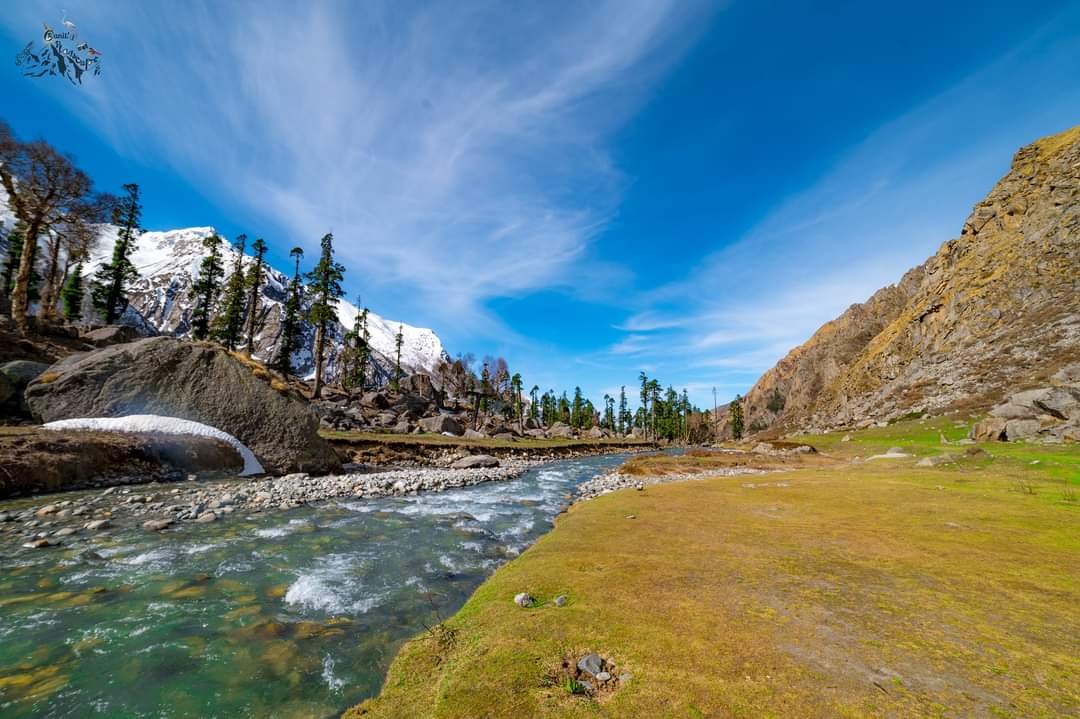
What should we and you keep more safe in the trek
Whenever you are going for any trek, it is very important that you go completely fit and ready.
Ruinsara tal Harkidun trek is Moderate, if you make your feet and your mind calm and strong, you will find the trek very easy.
While trekking, keep in mind that you are walking on the right route or not always with your guide.
Most people look somewhere and where they are walking, this can cause twitching in your legs, which can ruin your entire trek.
It is important to ask your doctor if you have any medical problems
I should always keep my medical kit with me, it is very important.
Himalayan Hikers always keep a medical kit with you, such as oxygen cylinders, medicine to be given in emergency on the trek
If any trekkers have any more problems, then they are brought back to the base camp by laying them in the stretcher.
Our Harkidun- ruinsara tal Camps is around the 6000 ft to 11,000 ft where you can not have any problem of oxygen, this is tree line area
In case of any medical problem, the help of your guide or a well-informed trekkers should be taken
If there is major health problems in this trek , then Nearest Hospital is in Mori which is about 67 Kms away from harkidun or ruinsara tal trek
Our camps also move forward day by day and our bodies also work with the altitudes that are safe for trekkers
Along with the trek we keep getting acclimatization
Himalayan Hikers always take care of their trekkers anyway it is one of our local trek where we live everyday.
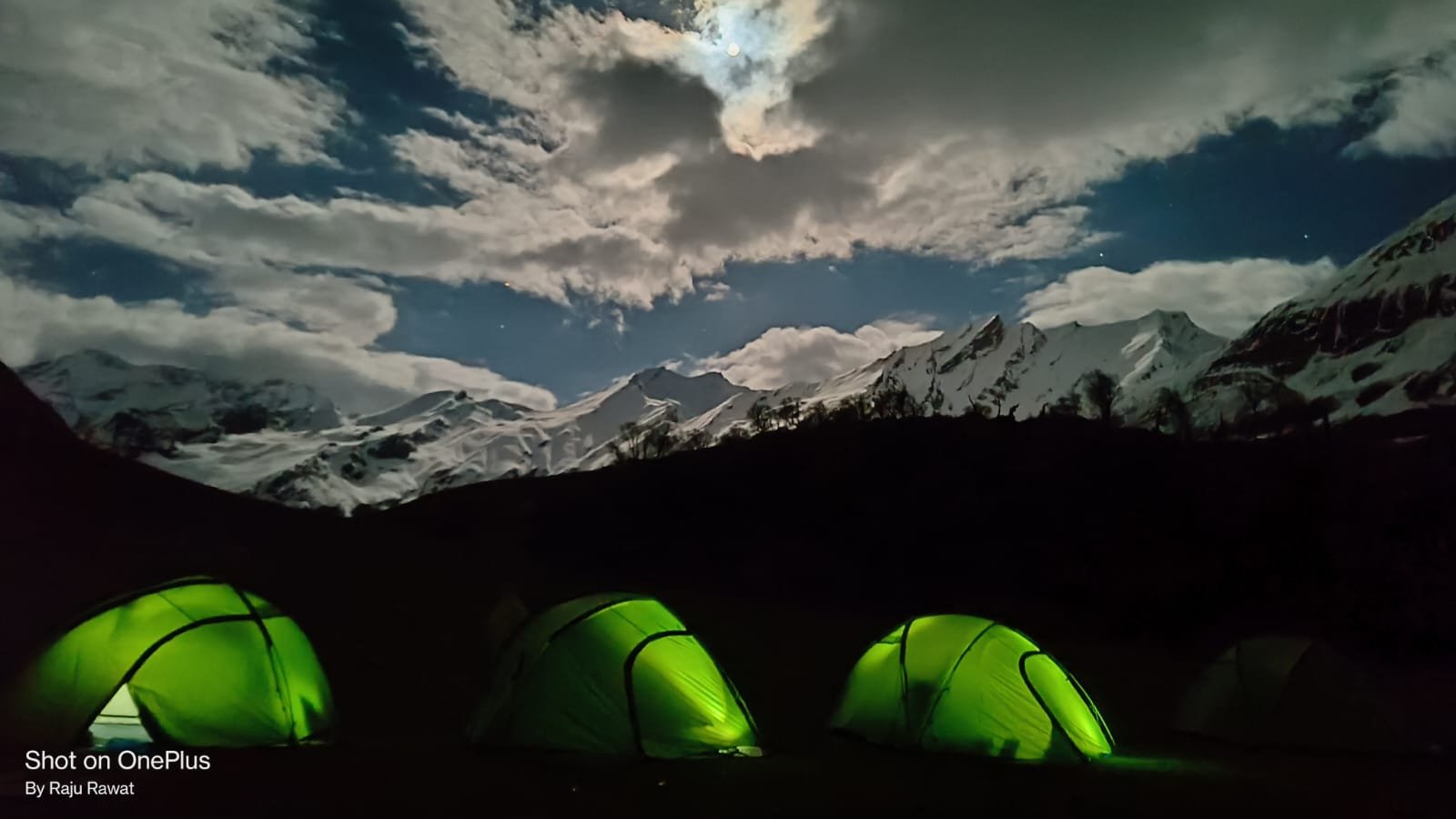
How to Reach Har Ki Dun Ruinsara Tal Trek ?
Reaching Dehradun is the first step for embarking on the Har Ki Dun Ruinsara Tal Trek. Here’s a guide on how to get to Dehradun from various locations:
By Air
Dehradun Airport (Jolly Grant Airport):
- Location: Approximately 25 km from Dehradun city.
- Flights: Regular flights connect Dehradun with major cities like Delhi, Mumbai, and Bangalore.
- From Airport to City: You can take a taxi or shuttle service to reach Dehradun city center or your hotel.
By Train
Dehradun Railway Station:
- Trains: Dehradun is well-connected by rail, with numerous trains coming from cities like Delhi, Haridwar, Lucknow, and Kolkata.
- Popular Trains: Some of the well-known trains include the Nanda Devi Express, Dehradun Express, and Mussoorie Express.
- From Station to City: Taxis and auto-rickshaws are available outside the station for local transportation.
By Road
From Delhi:
- Distance: About 260 km.
- Buses: Regular bus services (government and private) operate from ISBT Kashmiri Gate in Delhi to Dehradun. You can choose from luxury, semi-sleeper, and ordinary buses.
- Self-Drive: You can also drive via NH 7 and NH 34. The journey takes around 6-7 hours, depending on traffic conditions.
From Haridwar:
- Distance: Approximately 55 km.
- Buses and Taxis: Frequent bus services and taxis are available from Haridwar to Dehradun. The drive takes about 1.5 to 2 hours.
Local Transport in Dehradun
- Taxis and Auto-Rickshaws: You can hire local taxis or auto-rickshaws for transportation within Dehradun to reach your accommodation or the bus terminal for onward travel to Sankri.
Getting to Sankri
After reaching Dehradun, you will need to head to Sankri, the base camp for the Har Ki Dun – Ruinsara Tal trek.
- By Road: You can take a bus or hire a taxi from Dehradun to Sankri.
- Distance: Sankri is about 200 km from Dehradun, and the journey takes approximately 7-9 hours depending on road conditions.
- Buses: Some trekking agencies may arrange transportation from Dehradun to Sankri as part of their package.
Trekking with a local team, Himalayan Hikers for the Har Ki Dun Ruinsara Tal trek
Here are some compelling reasons to choose a local trekking team:
Local Expertise
- Knowledgeable Guides: Local guides from Himalayan Hikers possess extensive knowledge of the region, including its geography, flora, fauna, and culture. Their expertise ensures that you get insightful information throughout your trek.
- Navigation Skills: They are familiar with the trails, ensuring safe navigation through the sometimes challenging terrains and weather conditions.
Safety and Support
- Emergency Preparedness: Local teams are equipped to handle emergencies, such as altitude sickness or injuries. They have first aid training and are familiar with evacuation routes and protocols.
- Acclimatization: Experienced guides know the importance of acclimatization and can adjust the itinerary to ensure trekkers are well-prepared for the altitude.
Cultural Immersion
- Connect with Local Culture: Trekking with a local team allows for deeper cultural interactions. Guides can introduce you to local customs, traditions, and the daily lives of the villagers in areas like Osla and Seema.
- Sustainable Tourism: Choosing a local trekking company supports the local economy, helping preserve the cultural heritage and environment of the region.
Tailored Experience
- Customizable Itineraries: Local teams like Himalayan Hikers often provide flexible itineraries that can be tailored to meet the needs and preferences of trekkers. Whether you want a leisurely pace or a more challenging experience, they can accommodate your request.
- Personal Attention: Smaller local teams can offer more personalized attention and care, making your trekking experience more enjoyable and engaging.
Quality of Service
- Logistics and Comfort: Local teams manage all logistical aspects of the trek, including accommodation, meals, and transportation. This ensures a smooth experience without the stress of planning these details yourself.
- Catering to Dietary Needs: Local teams are more adept at catering to specific dietary requirements, ensuring that all trekkers have nutritious meals throughout the journey.
Community Engagement
- Responsible Trekking: Local teams prioritize sustainable practices and responsible trekking, ensuring minimal impact on the environment. They often engage in community initiatives to preserve natural resources and promote environmental awareness.
- Wildlife Conservation: Local guides are more aware of the importance of wildlife conservation in the area and can educate trekkers about the local ecosystem.
Cost-Effectiveness
- Competitive Pricing: Local trekking companies often provide more competitive pricing compared to larger, international tour operators. This means you get great value for your money while supporting the local economy.
Memorable Experience
- Stories and Connections: Trekking with locals can create a more memorable and enriching experience, as you can share stories and build friendships with your guides and fellow trekkers.
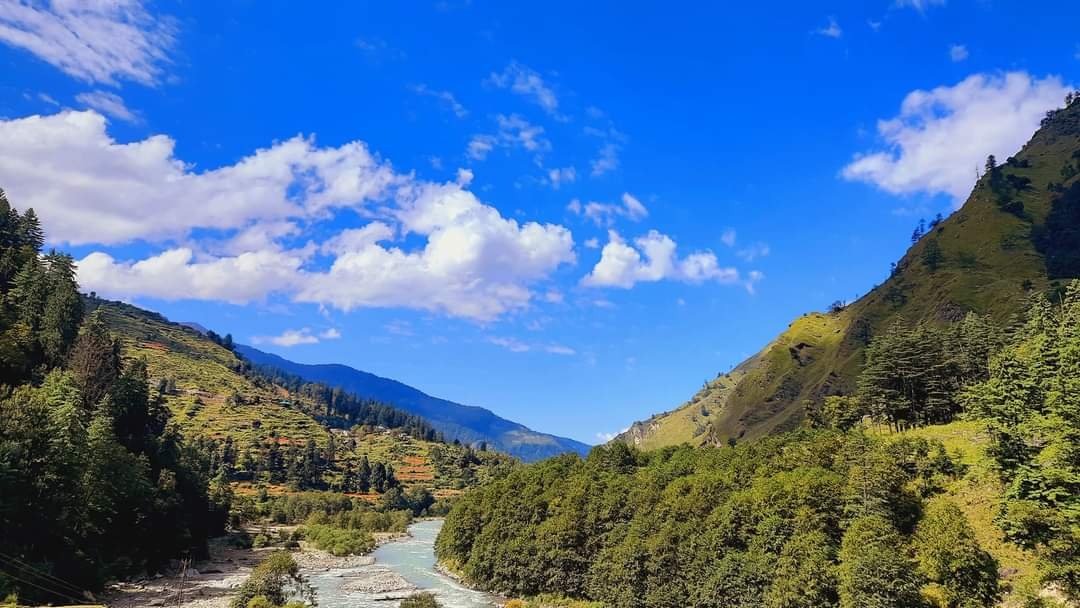
What special work Himalayan Hikers do on the trek for the safety of their trekkers?
Himalayan Hikers prioritize the safety and well-being of their trekkers throughout the Har Ki Dun – Ruinsara Tal trek. Here are some special measures and practices they implement to ensure trekkers have a safe and enjoyable experience:
Experienced Guides
Trained Professionals: Himalayan Hikers employs experienced guides who are trained in wilderness first aid, altitude sickness management, and emergency response protocols. They are well-versed in the local terrain and weather patterns.
Cultural and Environmental Awareness: Guides are knowledgeable about the local culture, wildlife, and environment, helping trekkers understand and respect the region.
Pre-Trek Briefings
Safety Briefings: Before starting the trek, trekkers receive detailed briefings about safety measures, the trekking route, potential risks, and how to handle various situations. This helps prepare everyone for the trek ahead.
Equipment Checks: Guides often conduct checks of trekkers’ gear to ensure everyone is adequately equipped for the journey.
Acclimatization Strategies
Gradual Ascent: The itinerary is designed with gradual ascents to help trekkers acclimatize to the altitude. This reduces the risk of altitude sickness.
Rest Days: Planned rest days allow trekkers to acclimatize properly and recover from the physical demands of trekking.
Health Monitoring
Regular Check-Ins: Guides regularly check in on trekkers’ health and well-being, monitoring for signs of fatigue or altitude sickness. They are trained to recognize symptoms and can make decisions on adjusting the itinerary as needed.
First Aid Kits: Comprehensive first aid kits are carried by guides, equipped with medications for common trekking ailments, including altitude sickness, pain relief, and minor injuries.
Emergency Preparedness
Emergency Plans: Himalayan Hikers have established emergency protocols in case of severe altitude sickness or other emergencies, including evacuation plans to the nearest medical facility.
Communication Systems: Guides are equipped with communication devices to stay in touch with base camp and coordinate emergency assistance if needed.
Group Management
Small Group Sizes: Treks are conducted with smaller group sizes, which allows for better individual attention, monitoring, and care.
Teamwork: Guides encourage teamwork among trekkers to foster a supportive environment, which can be crucial during challenging segments of the trek.
Sustainable Practices
Leave No Trace Principles: Himalayan Hikers educate trekkers on sustainable trekking practices, including proper waste disposal and minimizing environmental impact, ensuring the safety of the ecosystem trekkers enjoy.
Wildlife Safety: Guides inform trekkers about local wildlife and how to behave around them to avoid conflicts or disturbances.
Local Knowledge and Adaptability
Route Familiarity: Guides are familiar with alternative routes and can adapt the trekking plan if weather conditions or unforeseen circumstances necessitate changes.
Local Connections: Being local, guides can access information from nearby villages and fellow trekkers, which helps in assessing conditions on the trails.

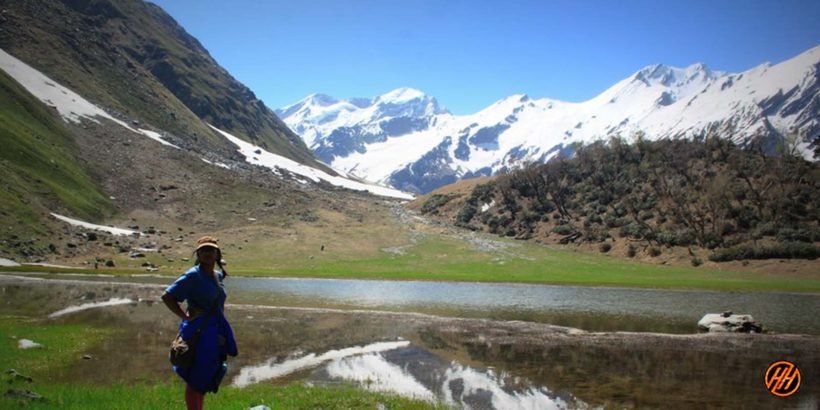
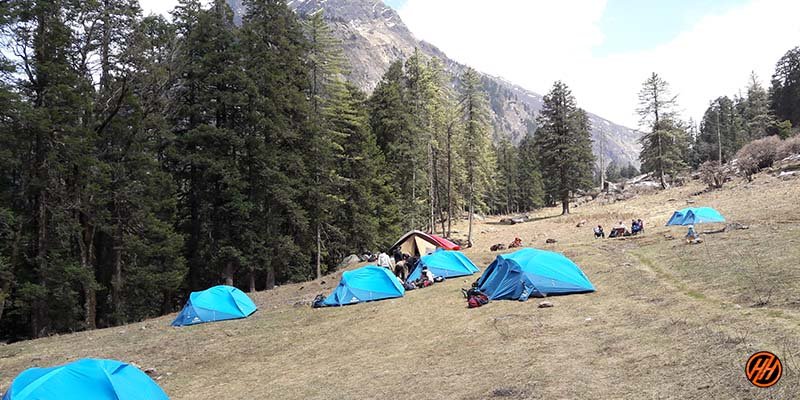
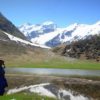
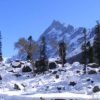
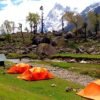
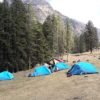
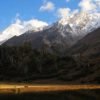
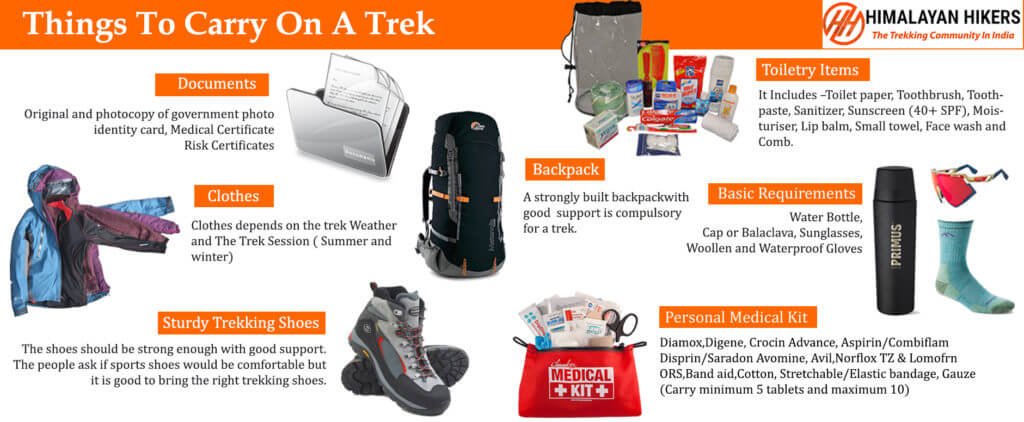
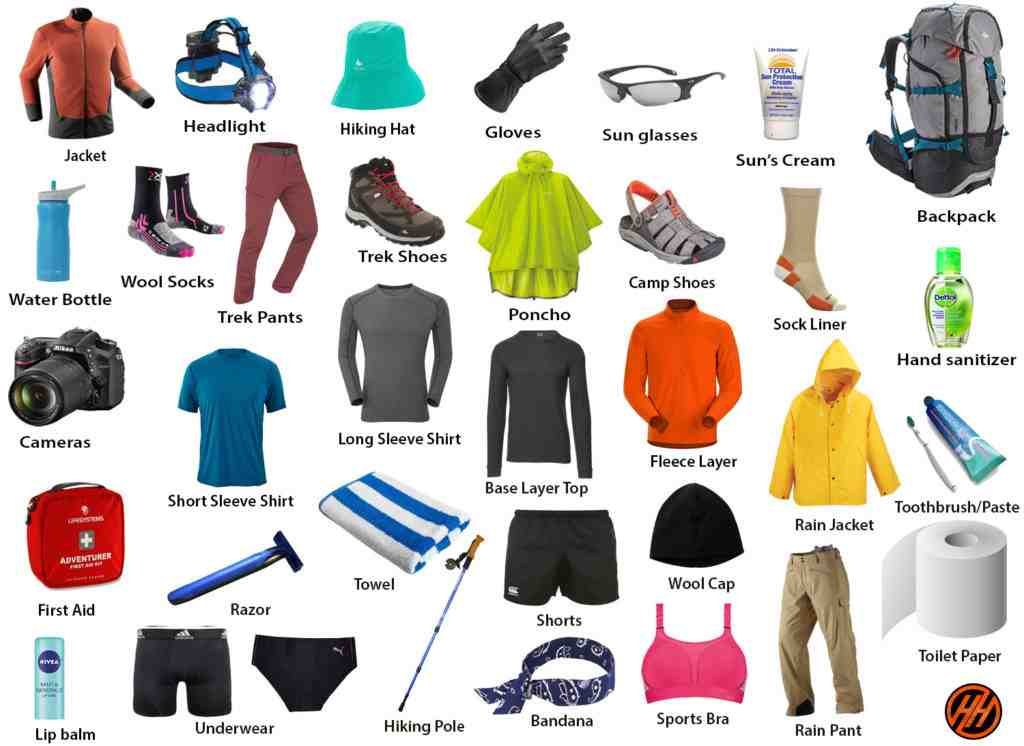
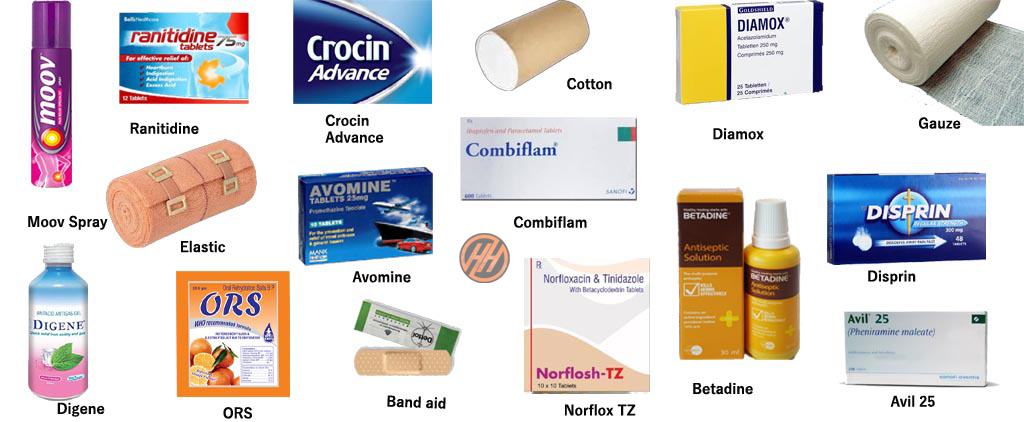
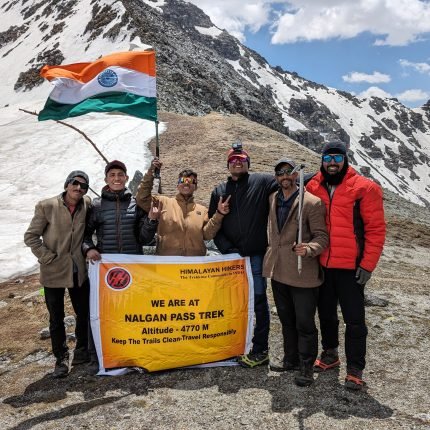
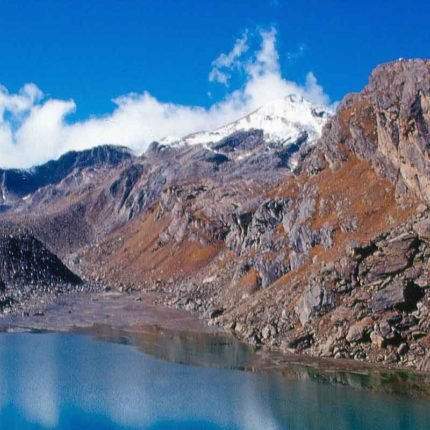
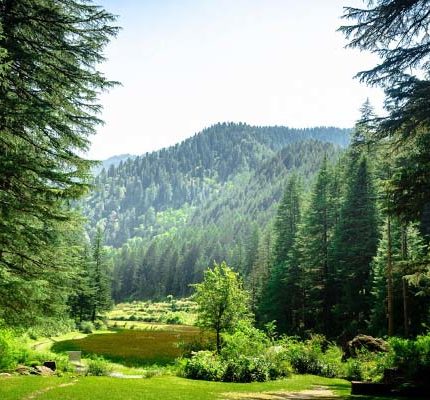

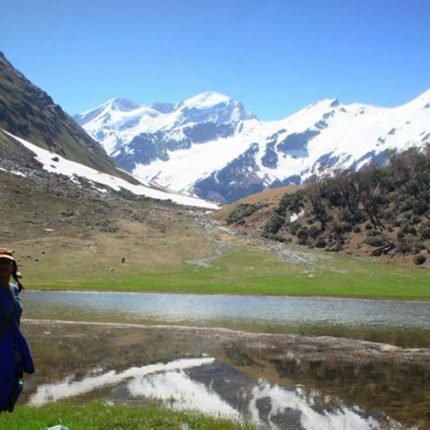
Reviews
There are no reviews yet.